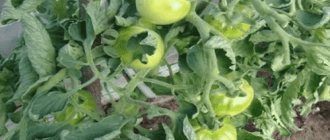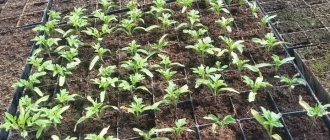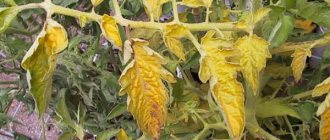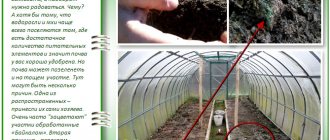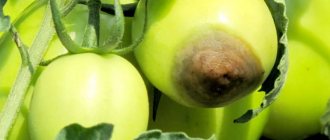How to get rid of the problem?
When green deposits appear on the soil in the garden or vegetable garden, you need to immediately begin to fight it. Mosses and algae are able to take most of the nutrients from the soil, which is why the plants planted by the gardener may be deficient in mineral components. In turn, their shortage will negatively affect the yield of plant crops.
There are several ways to remove greens from the soil surface. Let's talk about each of them in more detail.
Mulching
This process involves covering the ground with a layer of mulch on top. It protects the soil from various unfavorable factors and leads to an improvement in its properties. Various organic and inorganic components can be used as mulch. For these purposes, gardeners often use:
The use of mulching allows you to:
When mulching you need to follow a number of rules:
Normalization of acidity
Mosses and algae actively grow in acidic soils. If the earth is covered with a green carpet, you should not immediately reduce the acidity level - first of all you need to check the indicators. To do this, you can use specialized instruments or resort to traditional methods of measurement.
Methods for determining the acidity of the earth.
To quickly determine the acidity of the soil using available tools, gardeners recommend taking several currant or cherry leaves, a container and boiling water. The leaves need to be poured with hot liquid, and after it cools, throw in some earth. If the soil is acidic, the water will turn red. Green color indicates neutral acidity, and blue indicates a slightly acidic environment.
If the soil turns out to be acidified, measures should be taken to reduce acidity levels. To do this, it is recommended to use lime or dolomite flour and chalk. These components need to be scattered around the perimeter of the site in small quantities.
Replacing the top layer
This is the most difficult method of combating mold, moss or algae. You need to resort to it only if other methods have not helped solve the problem. Replacing the top layer of soil requires serious time and effort. It is recommended to carry out such an event in the fall after the harvest is complete.
Soil replacement includes several stages:
Crop rotation
Excessive application of fertilizers to the soil often causes the appearance of moss and algae on its surface. If crops that require large amounts of minerals and other nutritional components are grown on the site, you need to resort to crop rotation. It is aimed at the rational use of land resources.
All grown plants can be classified into 3 types:
Over the course of 3 years, representatives of these crops must be planted alternately, starting with the 1st group and ending with the last. Afterwards it is recommended to take a break of 1 year. During this period, the soil should be well fertilized.
Use of chemicals
To combat green shoots, special preparations are used, which can be found in seed stores. Plowed soil can be treated with Bordeaux mixture or copper sulfate. For greater effect, experienced gardeners recommend preparing your own solution based on copper sulfate and slaked lime. To do this you need:
The same actions are performed with copper sulfate, after which the resulting solutions are mixed. This composition is used to treat the soil before planting.
What to do
If the soil in the greenhouse has changed color or the soil has turned green, this does not mean that the plants being grown are in danger. Algae and mosses themselves are not capable of harming other plants. However, they are an indicator of changes in the state of the environment. Greening may mean that the pH reaction has changed towards the predominance of hydrogen ions. This indicates that the soil has become acidic. In addition, following algae and mosses, lichens, fungi and bacteria can increase their numbers, which can pose a threat to cultivated plants.
There are 2 ways to solve the problem:
- changes in soil conditions;
- the use of chemicals that destroy unwanted greens.
If possible, the greenhouse should be ventilated and dried. At the same time, the soil should be loosened. This is best done by deep (at least 20 cm) digging. At the same time, you need to add rotted manure and dead organic matter in the form of dry leaves, grass, straw, and sawdust.
Manure and plant residues create and maintain a loose soil structure for a long time, which reduces the effect of stagnant waterlogging. If there is a waterproofing layer at a depth of 50-20 cm, then it is recommended to create a layer of dry leaves, grass or sawdust between it and the soil. She will act as a sponge. Thanks to it, moisture will concentrate in depth and not on the surface of the soil.
After loosening, the beds should be planted with plants with fast growth, shallow root systems and large leaves. They will consume a lot of water, dry out the top layer of soil, and shade the surface of the soil.
The chemical method of combating unwanted greenery should be used as a last resort. To do this, the soil is treated with Bordeaux mixture, which is a mixture of copper sulfate and slaked lime. The ingredients are dissolved in equal proportions. The surface of the soil in the greenhouse is sprayed at the rate of 1 g per 1 square meter. m.
There is no need to be afraid of the appearance of a green coating. This is just an indicator of the condition of the soil and air environment. With the right and timely actions, you can easily return the former prosperity to the land and cultivated plants.
Source: ofazende.com
Thorough ways to combat greening of the soil in a greenhouse
Greenhouse heat supply diagram: 1 – greenhouse circuit; 2 – heating circuits of various zones of the greenhouse; 3 – gas boiler; 4 – economizer; 5 – boiler circuit pump; 6 – heating circuit pumps; 7 – control valves; 8 – hydraulic arrow; 9 – chimney; 10 – air-to-water heat pump.
The main methods of combating green soil in greenhouses can be to take measures to level the acid-base balance by reducing acidity, completely changing the top soil layer, using crop rotation or mulching the soil.
As for the method of optimizing soil acidity, you should first determine exactly what kind of acidity a given soil has in a particular greenhouse. This can be done using a special device using chemical analysis: buy analyzing strips at a pharmacy and prepare an aqueous solution yourself or seek help from a laboratory. There are also some ancient methods for determining soil acidity using simple chemical techniques. The simplest method is to prepare an infusion of five currant leaves, into which a little of the soil being tested is dipped. A blue tint indicates a neutral environment, green indicates a slightly acidic environment, and red indicates an acidic environment. After determining the acidic environment, measures are taken to level it by alkalizing the soil. To do this, sprinkle the greenhouses, namely the soil in them, with chalk chips or quicklime. You can also use pure wood ash, but this method is only suitable for slightly acidified soils, and besides, it is unsafe for the ground for a greenhouse.
Diagram of a greenhouse with solar heat accumulation in the soil: 1 – pits; 2 – soil pipes; 3 – connecting channel; 4 – fan.
If the greenhouse is not the only one on the site and the soil in it is very neglected, then you can resort to completely replacing the fertile soil layer. To do this, you need to remove about 30 cm of soil with a shovel and sprinkle the resulting area with quicklime. The next day you can extinguish it and thoroughly clean all the sides and bottom of the greenhouse. Leave to dry for several days. Now that the greenhouse is ready, the new soil should be of high quality. It should be evenly distributed over the area, filling it with air and loosening it. After this procedure, any past fertility problems can be definitely ruled out.
When long-term planning for high soil fertility, it is convenient to use a crop rotation schedule in several greenhouses or greenhouses. The basic principle of crop rotation is the annual change of the cultivated crop on each plot. This allows the soil to be enriched with the fullest range of minerals that plants may need. Initially, all cultivated crops are classified into three groups depending on the amount of fertilizer. Plant the plants that need the most fertilizer in the first greenhouse, less in the second, and least fertilized ones in the third. Leave the fourth greenhouse empty and fertilize it most heavily during this period. Change the sowing sites in the same order every year. The use of crop rotation will significantly reduce fertilizer costs and significantly increase crop yields.
Scheme of a greenhouse frame made from a profile pipe.
The simplest and most effective method of combating greenery that appears on the soil in greenhouses has long been considered mulching using green manure plants. Mulching involves covering the soil layer of a greenhouse or greenhouse with freshly cut herbs directly under the tomatoes. To do this, you can cut any tall weed with a sickle. The main thing is that there are no roots from it. Experienced gardeners use green manure crops. This can be any cereal crop, for example wheat. They can be mowed and sown in one place several times a season. The cut grass is placed on the soil of the greenhouse, punctures are made with a pitchfork or the soil is loosened with a hoe. At the same time, the moisture remains in the ground for a long time, which allows you to water the tomatoes several times a month as needed. The earth does not dry out, and rotting plants maintain the optimal temperature of the root system at any time of the day and at the same time fertilize the earth during decomposition.
How to avoid moss in a greenhouse
There are several ways to solve the problem, one of them is digging up the earth / Photo: mamadysh-rt.ru
- Mulching, especially if the ground is not dug up. For this, you can use, in principle, any material from organic (humus, sawdust, straw, compost) to non-woven (its density should be as high as possible).
- Digging up the earth.
- Ventilation of the greenhouse in spring. If the presence of vents is not provided for, then they should be made. This way, condensation will no longer collect on the ceiling. Accordingly, a fungal infection will not develop in it either.
- Soil deoxidation. Chalk, lime, bone, phosphate and dolomite flour, eggshells, and ash are added to it, which help maintain an optimal pH level. As for ash, it is algae and mosses that especially dislike it.
- Sowing green manure. In this case, mustard does the job best. The main thing is not to forget to water the plants, because rainwater does not get inside the greenhouse.
By adhering to the recommendations, you will eliminate factors that are positive for the growth of organisms and return the soil to its normal state / Photo: stroy-podskazka.ru
is the right way to drive ants out of a greenhouse on your site.
Consequences of soil greening
Algae and mosses compete with cultivated plants, removing nutrients from the soil. They absorb phosphorus especially actively, so an excess of phosphorus-containing fertilizers during feeding can stimulate their rapid reproduction. They can also parasitize other vegetation.
Soil covered with a green coating and elements of buildings or decor do not look aesthetically pleasing. Greening of the soil in the beds is a signal of poor soil care or increased acidity, all of which together have a negative impact on the crops grown by humans.
Important! In order not to harm the soil and plant crops, you should strictly follow the instructions for dosing copper sulfate. This substance should not be more than 1 g per 1 m².
Fertilizers
The reason for the rapid spread of algae in a greenhouse may be an excess of phosphorus fertilizers. If the ground is covered with a green coating, it is worth considering whether you fertilized with phosphates too often.
All plants need phosphorus, especially during the first stage of growth. It promotes the development of the root system and participates in photosynthesis processes. But excess phosphorus can cause plants to poorly absorb iron, zinc and some other trace elements. Unlike nitrogen, phosphorus anions can be fixed in the soil and remain undissolved in it. To get rid of phosphorus, you need to change the soil.
Excess phosphorus in the soil
Phosphorus fertilizers are beneficial for plants. They increase the resistance of crops, increase productivity and improve taste. It is worth remembering that mosses, lichens and algae love to settle on fertile soils. And if there is an excess of phosphorus in the ground, then they will become permanent residents of the beds and begin active reproduction.
It is recommended to carefully study the methods of application and dosage of fertilizers, and also to know which crops need the mineral and in what quantity.
It's time to sound the alarm: Marchantia moss
Marchantia is a liver moss. In appearance, this scourge resembles some kind of lichen. If you pick it up, thin roots will follow it, like a sticky web, and even the smallest piece of it left in the soil will completely resume its lush growth.
In general, the natural habitat of marchantia is acidic, moist soils on the banks of the river and in the shade of dense forests. But, unfortunately, many seeds and bulbs, especially Polish and Dutch, are infected with the spores of this scourge. And once in sufficiently acidic and moist greenhouse soil, marchantia quickly forms a dense “rubber” coating, almost completely blocking oxygen to the soil and roots of cultivated plants. At the same time, by summer it builds up its reproductive organs, from which millions of new spores fly around.
What’s interesting is that even copper sulfate does not attack Marchantia, not to mention ordinary pesticides, which you also don’t want to see in a greenhouse. Therefore, unfortunately, the only effective way to combat marchantia so far can only be called physical labor - manually picking out this moss from greenhouse beds and immediately mulching with peat. Another option is to simply dig with a shovel so that the moss is under the top layer of soil. And finally, a thick black film will help you.
Act quickly, get rid of moss and algae immediately and radically, and in the future completely review your greenhouse cultivation techniques.
Source of the article: https://vasha-teplitsa.ru/virashivanie/zeleneet-zemlya-v-teplice.html
Is the greenhouse soil covered with moss?
In light soil - every 3-4 years.
Reason #1. Ideal conditions created
Step 3. Check to see if moss has appeared in places where you always have shade in your greenhouse? Perhaps something is shading it - a support or a tree nearby? Then place reflective foil nearby, which will illuminate this area - just as they do in a thermos greenhouse. A simple and effective solution.
- Step 2. Let's take a closer look at what exactly grew in the beds and gives the green color.
- If the problem is still the acidity of the soil, use any alkali: lime, gypsum, dolomite flour, calcium carbide. Calcium carbide, by the way, when reacting with water releases a valuable substance - acetylene. Evaporating quite slowly, it helps the tomatoes ripen, which is also good.
- Step 3. No reaction? So it's sour.
Reason #2. The soil is too acidic
Step 1. Take a handful of soil and place it on a plastic plate or bag.
- In the first year, plant crops that require a lot of fertilizer. For example, eggplants.
- It is not recommended to use chemicals to combat moss and algae, as this will negatively affect the plants. Remember that a large amount of fertilizer will inevitably lead to greening of the earth. If the greenhouse is well ventilated, the plants do not receive excessive moisture and are fertilized in moderation, then you will not face such a problem as greening of the soil.
- Ventilate the greenhouse and sprinkle the ground with fluffy lime more often. There’s nothing wrong with that, it’s just that the soil is sour. I wish you good luck, if you need anything, please contact me, I’ll help.
- Marchantia is a liver moss. In appearance, this scourge resembles some kind of lichen. If you pick it up, thin roots will follow it, like a sticky web, and even the smallest piece of it left in the soil will completely resume its lush growth.
- Step 2. After watering, loosen the soil around the plants and in the beds themselves.
In severe cases - after 5-6 years.
- If you determine that it is moss, then the soil is still acidic. And if you don’t touch the moss for several days (for example, you go to the dacha only on weekends), then it will spread as quickly as possible. Plants will begin to lag behind in growth, because the moss will take over all the valuable substances that it finds in the soil. Therefore, act immediately, especially since this is a solvable problem. Just follow these instructions:
- Step 3. If it turns out that it is moss, we direct additional lighting or sunlight onto it using a large mirror, and open the windows.
- Green soil can appear in a greenhouse for several reasons:
And finally, there is another fairly accurate folk method:
Step 2. Add a few drops of table vinegar.
Reason #3. Moss “crept” from the frame
In the second year - those that grow on lightly fertilized soil. For example, cucumbers.
The fact is that in loose, structural soil, air exchange occurs correctly, and the roots receive the right amount of oxygen. If we stop digging the soil and loosening the beds, but at the same time we do not mulch, as nature requires, then things are bad.
Why does the soil color change?
Algae and moss spores are present in almost any soil. However, they are activated only when conditions favorable to them are created. These include:
- prolonged waterlogging of the soil;
- constantly humid air in the ground layers;
- poor drainage;
- overdose of mineral fertilizers, especially phosphorus.
These reasons are a consequence of the creation of incorrect humidity and temperature conditions. The fact is that algae, mosses and lichens can quickly spread only over the surface of the earth. In nature, this occurs due to frequent rains and fogs, as well as due to the appearance of a layer capable of accumulating moisture. This layer includes poorly rotting dead organic matter, peat, etc. The presence of a waterproofing layer located close to the ground surface is also of great importance. This function can be performed by:
- clay;
- permafrost (permanent or temporary);
- over-compacted soil layer.
Basic methods of struggle
There are several methods with greening:
- Replacing the top layer;
- Reducing soil acidity levels;
- Mulching;
- Rational crop rotation in a greenhouse.
Replacing the top layer
Replacing the soil will require a lot of effort and time.
Complete or partial replacement of the soil in a greenhouse is the most radical way to combat greening. This is quite a costly event both in terms of time and effort.
It should be used if all other methods have not been effective. Such soil replacement should be carried out either in the fall, after there are no plants left in the greenhouse or greenhouse, or in the spring, before planting seedlings.
How to replace soil:
- remove the top layer of soil, at least 0.3 m thick;
- treat the remaining surface with quicklime;
- After about a day, the lime must be quenched with ordinary water;
- the entire surface of the soil on which the lime was slaked must be very carefully whitened;
- leave the soil in a whitewashed state for two to three days;
- After the soil has completely dried, a new, fresh one is brought in and laid.
Reducing soil acidity levels
Before you start reducing the acidity level of the soil, it is important to find out what the acidity level of the soil in your greenhouse is. This can be done either with special devices or using improvised means.
- Agrochemical laboratory. If you have the desire, time, free finances and energy, then you can submit a soil sample for analysis to a special laboratory, which will determine the acidity of your soil with an accuracy of thousandths.
- Litmus paper. Sold in many seed stores, pharmacies or stores specializing in the sale of chemical reagents.
- Soil meter. A fairly inexpensive device that can be purchased at specialized garden centers and stores. They can determine not only acidity, but also humidity, temperature, and illumination of the soil.
Litmus paper
- Alyamovsky's device. This is a kit that includes instructions, chemical reagents, test tubes, sample paint scales and a universal indicator.
- Currant or cherry leaves. You need to brew a few currant or cherry leaves in boiling water in a glass container. After the water in the vessel has cooled, you need to throw in a pinch of earth. If the soil is acidic, the solution will turn red, if it is neutral, it will turn green, and if it is slightly acidic, it will turn blue.
If you have determined by any method that the soil in the greenhouse is acidic, you need to take measures to correct its condition.
Good deoxidizers are:
- fluff (slaked lime);
- lime flour;
- peat or wood ash;
- dolomite flour;
- lake lime (dry drywall);
- ground chalk
You can also use green manure plants that reduce soil acidity, such as:
- oats;
- rye;
- lupine;
- Vika;
- phacelia.
All of the above methods for reducing soil acidity can be used in combination. For example, add dolomite flour or ash, fertilize the soil with rotted mullein and mulch the top with grass or sawdust (see Biofuels for greenhouses and greenhouses - types and applications). Before mulching, you can water the soil with any preparation containing living microorganisms.
Leave everything alone for 5-7 days, and then plant a green manure plant.
Mulching the soil
Mulching the soil
is necessary both to maintain an optimal level of moisture, both soil and air humidity. In addition, the mulch left in the greenhouse after harvesting, having rotted over the winter, will enrich the soil with various mineral elements.
You can mulch with grass, sawdust, straw, hay, tree bark, and compost. You should not mulch with conifer needles on acidic soils, as this can cause even greater acidification.
When mulching, you must follow a number of rules:
- Only well-watered soil can be mulched.
- After watering, it is necessary to thoroughly loosen the top layer of soil around the plants and in the beds, and only after that lay the mulch.
- There must be a small distance between the mulch and the plant stem for normal air circulation.
What is the first thing you should do when greening the soil?
Of course, the formation of lime and green deposits is very bad. The process of getting rid of this is considered quite long and laborious. But there are a few simple steps to take as soon as you notice algae:
- At first, it is necessary to reduce watering. If the radius of infection is huge, then it is worth stopping it altogether.
- If the soil turns green in a greenhouse or greenhouse, you should ventilate the room well or install specialized ventilation.
- It is necessary to determine what the green coating is. This will allow you to decide what to do when greening the soil in the greenhouse. If the soil is inhabited by moss, it is necessary to ensure the penetration of light, and if there are algae, it is important to limit its access.
Overmoistening
Moss begins to sprout in a greenhouse or greenhouse due to excessive moisture. Moss spores get inside along with irrigation water, are carried on shoes or with other objects. Under favorable conditions - twilight, humidity, warmth - it begins to germinate and multiply. Here's what to do when you find areas of overgrown moss:
- stop watering for several days;
- ventilate the greenhouse;
- remove the thin top layer of contaminated soil or dig it up.
Usually these measures are sufficient if the cause is waterlogging. It happens that green algae begin to grow in heavily moist areas. They should be sprinkled with sand or sawdust, since they spread quickly in the light, unlike moss, which prefers twilight.
Soil too acidic
In summer cottages, the soil begins to acidify over time. There may be several reasons. The main one is the constant application of fertilizers, peat, humus. Moss spreads quickly in such soil.
You can determine soil with high acidity using litmus. Indirect signs are the distribution of characteristic plants - sorrel, woodlice, plantain. The moss itself will indicate the Ph level, if the base of the plant is brown, the chance of acidification is high.
The condition of the soil can be normalized by adding ash, lime, and chalk. Or plant mustard and oats on the plot.
The soil is covered with moss. Why is the soil covered with moss and what to do about it
Owners of dachas and garden plots are often faced with the phenomenon of moss, which covers the soil in beds, greenhouses, flower beds and settles on the surface of paths and blind areas. My area was not spared from this misfortune either.
I started looking for answers to why the soil in my garden began to turn green and found out that the reason was a plant - marchantia, which is a representative of liver mosses. In nature, Marchantia can be found on rocks, along the banks of reservoirs, and in low places in the forest. The plant is very aggressive, and without encountering competitors, it can take over fairly large areas.
Here are the main reasons for the appearance of moss on the soil:
- Constant waterlogging of the soil
- Low sun exposure
- Poor or acidic soils
In my case, the culprit was prolonged rains and a long absence of sun, which resulted in greenery appearing on the ground.
Why is green moss dangerous?
If moss practically does not interfere on paths, then cultivated plants in beds or flower gardens suffer from it. Having the ability to quickly grow into continuous carpets, green moss begins to oppress its neighbors, whose root system is no longer supplied with oxygen. In addition, Marchantia takes nutrients from the soil that are necessary for cultivated plants, as a result of which they grow, bloom and bear fruit poorly. On lawns, such a weed can destroy all vegetation.
How to deal with green moss
If you take timely measures, you can get rid of the green scourge in a short time using garden chemicals and your own labor. Gardeners use various methods to eliminate moss:
- Water the soil in early spring or late autumn with copper sulfate mixed with potassium permanganate.
- Remove a layer of earth 3-4 cm thick and turn it down. As a result, the Marchantia root system is exposed to air, and the plant dies.
- Constantly loosening is carried out to remove moss rhizomes.
- The soil is limed with dolomite flour, slaked lime, and wood ash, followed by mulching the soil surface.
How I fight moss in the garden
My personal experience in removing green moss involves constantly loosening the soil. I try to disturb the ground as often as possible with a hoe or shovel in those places where this scourge appears. The soil dries out and becomes loose, and the moss doesn’t like that.
Experienced gardeners advise using green manure to combat marchantia, which is sown directly over the moss, making furrows or holes for the seeds. It is also recommended to cover the entire area where greenery grows with black film for a long time. And in early spring, pour boiling water over this area, in which you need to dissolve vitriol and potassium permanganate.
If the article was useful to you, give it a “thumbs up” and subscribe to the channel for summer residents and gardeners “SADOёZH”.
Reasons for the appearance of moss in a greenhouse
Moss grows where there is moisture and little sunlight and loves acidic soils. With these three factors, you need to start investigating the reasons for the appearance of green plaque in the beds. The humidity in the greenhouse will be increased if there is no high-quality ventilation system and the windows are not opened after watering.
Thickened planting of tomatoes, peppers, and cucumbers is the second reason for dampness, and it is also a factor in poor soil illumination. The appearance of moss is a symptom that the soil in the greenhouse is acidic, wet, and poorly structured. This is the optimal environment for the propagation of a parasitic plant.
To determine the pH level, it is not necessary to take the soil to the laboratory - you can buy an electronic acidity meter.
Popular instrument models:
Luster Leaf Rapitest 1880
Determines humidity, pH, fertility level (ratio of nitrogen, phosphorus, potassium), degree of illumination
Luster Leaf Rapitest 1835
Shows temperature, pH, soil fertility
PH-Moisture meter 3 in 1
Measures pH, light level, soil moisture
Unbalanced feeding of greenhouse plants is another reason for the active reproduction of moss. Excess phosphorus provokes its rapid growth.
Beds with depressions
When forming a seat, the surface of the bed cannot always be perfectly leveled with garden tools. Over time, the earth tends to sag. Sometimes gardeners specially make holes - holes for planting plants. Yes, and garden pests can contribute to the formation of unevenness. Water accumulates in the depressions, and if the season is not dry, this leads to the appearance of a green coating. Therefore, we must not forget to loosen from time to time - level the beds and monitor the amount of watering of the plants.
The ground and parts of structures strewn with green deposits do not look aesthetically pleasing. Greening of the soil is a visible signal of a violation of care and processes occurring in the subsurface. You should not ignore it, because it negatively affects the crops grown.
(1 vote, average: 5 out of 5)
Share with your friends!
First actions ↑
- Significantly reduce watering or even stop it completely for a while.
- Determine what exactly makes the ground green: moss or algae. If it is moss, then it is necessary to increase the access of light to the room, since they love darkness. If it is algae, then it is necessary to block their access to light. To do this, sprinkle the ground with a layer of sand on top. In both cases, it is advisable to remove the contaminated layer.
- Increase ventilation.
- If these procedures do not help, move on to the “heavy artillery”.
It is strictly prohibited to use copper sulfate to destroy “greenery” on the soil.
Mulching the soil ↑
Try not to use synthetic mulch, since organic mulch is much healthier. You cannot pour mulch close to the trunk of the plant; for better air circulation, you need to leave free space between them. Before you start laying out the mulch, you need to moisten the soil and walk through it thoroughly with a hoe or chopper. After processing with a hoe, you need to take a pitchfork and use it to make many holes in the ground. This will help make the soil more airy and plump, air will pass through it more easily; in addition, loosening will prevent the formation of a hard crust on the surface of the soil, which does not allow air or water to pass through. Since mulching is carried out in a greenhouse, there is no need to fear that in organic option there will be mice or slugs. It is better to choose this one, because organic mulch does not need to be removed for the winter. On the contrary, leave it. Gradually rotting, it will play the role of natural fertilizer for plants.
Reducing soil acidity ↑
Determining acidity
Ash can be successfully replaced with dolomite flour. The second method is much easier and requires only five heels of black currant leaves or, in extreme cases, bird cherry. Place these leaves in a glass, pour boiling water over them and leave to steep. After the broth has cooled, we lower the soil into it to check. The broth should change color: acquiring a bluish tint indicates a neutral level of acidity, a greenish tint indicates slightly acidic soil, and red indicates increased acidity.
We are taking measures to reduce it
Replacing topsoil ↑
It is necessary to cultivate the land with quicklime. It should be extinguished only after it has been lying on the ground for some time. First, it is necessary to remove the top layer of soil, its thickness should be at least 30 cm. After this, the cleaned area is treated with lime. After about a day, the lime is slaked, and everything on top is thoroughly whitened. After whitewashing, several days must pass before new soil is brought in and laid out. Let the soil dry well and only then can you put clean and uncontaminated soil on top.
Crop rotation ↑
To ensure that the greenhouse does not remain idle for a whole year, you can perform crop rotation across the beds. There are cucumbers in one bed, tomatoes in the second, peppers in the third, and the fourth is empty. And then every year you change their places. There are three groups of crops, which are divided according to the level of nutrients they require. The first group includes those that need a large amount of fertilizer, the second group includes those that need an average amount, and the third group includes those that need a minimal amount. Over the course of three years, representatives of these groups are planted on the site alternately, starting with the first and ending with the third. After this, a one-year break is taken with increased soil fertilization. By adhering to this rule, you can forget about such a need as periodic replacement of soil. This is due to the fact that proper crop rotation helps prevent the depletion of mineral and other nutrient reserves in the soil. In addition, the cost of fertilizer is significantly reduced. Of course, it is quite difficult to deal with green soil; it is much easier to simply prevent this from happening. By adhering to the above rules, you can avoid the appearance of moss or algae in the greenhouse.
What to do if the soil in the greenhouse turns green?
- Reasons for greening of the soil in a greenhouse
- Methods for combating green soil deposits.
- Radical methods of combating soil greening
Gardeners who grow crops indoors use a variety of methods that prevent the soil from growing green in greenhouses. They empirically established the main reasons for the occurrence of this trouble, which are:
- Due to the strong moisture of the greenhouse soil, as well as when the water used for irrigation is blooming;
- Insufficient greenhouse ventilation;
- Applying large doses of fertilizers to the soil;
- Violations of the acid-base balance of the soil towards increased acidity.
Ways to eliminate greening
To eliminate the greenery that appears on the soil surface, chemicals are used or the soil is replaced.
Treatment by means
To combat green growth in a greenhouse, chemical treatments have a good effect. Bordeaux mixture or copper sulfate are perfect for this purpose. It is best to prepare a mixture of copper sulfate and slaked lime. To do this, stir 200 g of lime in 1 liter of hot liquid, then add cool water to 10 liters. The resulting mixture is then drained through a sieve. This procedure is also carried out with copper sulfate, and then it is mixed with a lime solution. The resulting mixture is used to treat the soil before planting seedlings.
Before treating the soil with chemicals, it should be noted that algae and mosses are quite resistant to the action of chemicals, so it is best to dig up the soil in the greenhouse and mulch. For moss on paths and buildings, as well as on the roof, you can use iron sulfate (45 ml per 10 liters of water). This amount is enough to spray 150 m². Herbicides such as Roundup or Lintur will help remove moss on stone paths.
Mold has appeared on the ground in the greenhouse: what to do?
It is not always possible to get the desired result as quickly, simply and without much effort, since many problems often arise, in particular such as mold. Why do you need a polycarbonate greenhouse?
To grow crops:
In order to overcome such formation, you can use special products purchased in stores. They contain a sorbent, which increases the amount of alkali in the soil, thereby deactivating mold.
Experienced gardeners prefer to use charcoal and ash in a 1:2 ratio. You need to sprinkle the land with this composition and loosen it. Thanks to the large amount of minerals and calcium, the fungus is destroyed.
How to reduce soil acidity?
Another reason for the growth of moss and algae that needs to be eliminated is too acidic soil. Using special instruments or improvised means, the acidity level is determined. It may be different in each greenhouse.
The acidity of the soil can be determined using the following methods:
- Litmus test. Many people met her in school and have an idea of what she looks like. Special paper that changes color upon contact with a certain environment. Using the scale attached to the paper, you can determine the degree of acidity.
- Soil meter. This device is purchased in specialized stores. It is used to determine illumination, temperature, soil moisture, including acidity.
- Laboratory. A method for those who have time, money and desire. The soil is sent to an agrochemical laboratory for analysis.
Soil too acidic
In summer cottages, the soil begins to acidify over time. There may be several reasons. The main one is the constant application of fertilizers, peat, humus. Moss spreads quickly in such soil.
You can determine soil with high acidity using litmus. Indirect signs are the distribution of characteristic plants - sorrel, woodlice, plantain. The moss itself will indicate the Ph level, if the base of the plant is brown, the chance of acidification is high.
The condition of the soil can be normalized by adding ash, lime, and chalk. Or plant mustard and oats on the plot.
Fertilizers
The reason for the rapid spread of algae in a greenhouse may be an excess of phosphorus fertilizers. If the ground is covered with a green coating, it is worth considering whether you fertilized with phosphates too often.
All plants need phosphorus, especially during the first stage of growth. It promotes the development of the root system and participates in photosynthesis processes. But excess phosphorus can cause plants to poorly absorb iron, zinc and some other trace elements. Unlike nitrogen, phosphorus anions can be fixed in the soil and remain undissolved in it. To get rid of phosphorus, you need to change the soil.
Under natural conditions, excess phosphorus in the soil is very rare, but if improper fertilizing is used, its consequences can be observed, so do not get carried away with mineral fertilizers.


